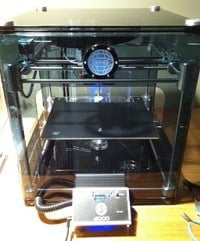 In last week’s post we described the unboxing and set up of the BFB 3000 printer, which turned out to be a pretty good experience. Today we’re discussing the operation of the 3000.
In last week’s post we described the unboxing and set up of the BFB 3000 printer, which turned out to be a pretty good experience. Today we’re discussing the operation of the 3000. If you’re like us and have a dose of shiny object syndrome, you’ll definitely like the 3000. It’s a beauty to look at, with its smokey translucent panels, dramatic precision steel rods and sheer size. This item is approximately four times the volume of MakerBot’s Thing-O-Matic, and that’s where we’ll start.
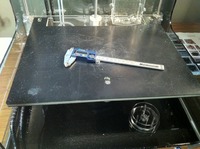 The build platform of the 3000 is truly massive for a home 3D printer. With the single head version you’ll be able to print objects as large as an amazing 27.5 x 27.5 x 21.0 cm! Of course, you’d be waiting quite a while to print something that big. The build envelope shrinks a tad on the X axis if you opt for the two-head machine (to 23cm) and even more if you add a third head.
The build platform of the 3000 is truly massive for a home 3D printer. With the single head version you’ll be able to print objects as large as an amazing 27.5 x 27.5 x 21.0 cm! Of course, you’d be waiting quite a while to print something that big. The build envelope shrinks a tad on the X axis if you opt for the two-head machine (to 23cm) and even more if you add a third head. But wait – THREE heads? Yes, that’s available. The model we’re testing has only two heads, but that’s twice as many as most 3D printers. The addition of a second head permits printing of support material that can be removed after print completion and thus enables many more types of shapes to be printed.
 Printing an object is a little different than using a 2D paper printer. You must prepare your “BFB” file (actually its familiar GCODE) and store it on an SD card that is subsequently inserted into the 3000’s control box. An extremely tiny readout permits selection of the file and commences printing. We’ve invented an attachment for the 3000’s control box others may find useful as you can see above. *Wink*
Printing an object is a little different than using a 2D paper printer. You must prepare your “BFB” file (actually its familiar GCODE) and store it on an SD card that is subsequently inserted into the 3000’s control box. An extremely tiny readout permits selection of the file and commences printing. We’ve invented an attachment for the 3000’s control box others may find useful as you can see above. *Wink*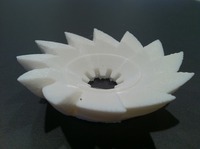 We found the prints to be of exceptionally good quality, even using default settings right out of the box. We used the 0.25mm profile, one of several highly tested configurations included that just seem to work without needing tweaks. Several test STL model files were included on the SD card. We printed the “duck” first, although apparently the tradition is to print a mug as your first object. The duck didn’t object.
We found the prints to be of exceptionally good quality, even using default settings right out of the box. We used the 0.25mm profile, one of several highly tested configurations included that just seem to work without needing tweaks. Several test STL model files were included on the SD card. We printed the “duck” first, although apparently the tradition is to print a mug as your first object. The duck didn’t object. The 3000 operates with some pleasant mechanical noises and is not nearly as noisy as some other 3D printers, but is no where near as quiet as the near-silent PP3DP Up! printer.
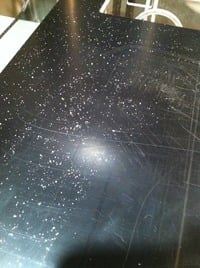 There’s a “chip box” at the rear of the 3000 for catching those hardened drippy bits that cling to the nipple of the print heads, and our box is slowly accumulating plastic curlies as prints proceed. But this solution ignores another problem: the extruder drive is a screw that lies alongside the filament, and this seems to generate a great deal of teeny plastic detritus that basically settles all over the entire lower part of the build chamber, particularly on the print bed. There doesn’t seem to be a good way to clean this stuff up other than the obvious: wipe it up by hand. Fortunately, it seems to stay inside the chamber and not fall outside. Very much.
There’s a “chip box” at the rear of the 3000 for catching those hardened drippy bits that cling to the nipple of the print heads, and our box is slowly accumulating plastic curlies as prints proceed. But this solution ignores another problem: the extruder drive is a screw that lies alongside the filament, and this seems to generate a great deal of teeny plastic detritus that basically settles all over the entire lower part of the build chamber, particularly on the print bed. There doesn’t seem to be a good way to clean this stuff up other than the obvious: wipe it up by hand. Fortunately, it seems to stay inside the chamber and not fall outside. Very much. The print bed is not heated, but it seems very adequate for printing. We were amazed at how well PLA adheres to the surface. Prying off rafted objects can require some effort, and if you’ve somehow printed a large raftless object, we wish you well in getting it off.
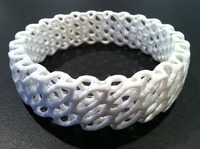 The 3000’s stepper motors ensure high quality prints by precisely controlling the extrusions and head movements. This is evident in printing sparse objects such as this bracelet, which might be difficult on other less capable 3D printers. The 3000’s hardware is top-notch. Custom made steel parts, slick cable guides and precision rods throughout ensure the machine is solid and reliable.
The 3000’s stepper motors ensure high quality prints by precisely controlling the extrusions and head movements. This is evident in printing sparse objects such as this bracelet, which might be difficult on other less capable 3D printers. The 3000’s hardware is top-notch. Custom made steel parts, slick cable guides and precision rods throughout ensure the machine is solid and reliable.
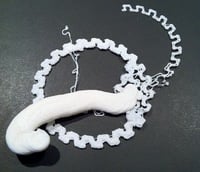 We thought that the most amazing feature of the device is its reliability. We’ve been printing baskets full of items and had only a single failure – but this was caused by printing a thin object raftless that didn’t exactly stick. You can see the horrifying result above. Moral of the story: don’t print raftless unless the object’s bottom is just enough to hold it on solidly, but not too much so that you can’t get it off easily. We’re using rafts as a default now.
We thought that the most amazing feature of the device is its reliability. We’ve been printing baskets full of items and had only a single failure – but this was caused by printing a thin object raftless that didn’t exactly stick. You can see the horrifying result above. Moral of the story: don’t print raftless unless the object’s bottom is just enough to hold it on solidly, but not too much so that you can’t get it off easily. We’re using rafts as a default now. 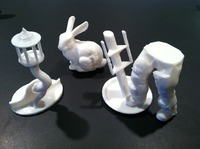 Aside from that single incident, the machine appears completely trustworthy, to the point where we routinely leave it absolutely unattended while printing. Printing larger objects overnight has become a common practice, and you’re virtually guaranteed to have a nice shiny object waiting to be pried off the print bed in the morning.
Aside from that single incident, the machine appears completely trustworthy, to the point where we routinely leave it absolutely unattended while printing. Printing larger objects overnight has become a common practice, and you’re virtually guaranteed to have a nice shiny object waiting to be pried off the print bed in the morning. The bottom line on the BFB 3000’s operation: This is a very solid, reliable 3D printer that produces high-quality objects virtually right out of the box.
Next week: The BFB 3000’s software experience.


Haven't tried the "Regular Bracelet" yet, but looks very interesting. I'd be interested in understanding how you go about designing these items, if you're open for that?
Haven't tried the "Regular Bracelet" yet, but looks very interesting. I'd be interested in understanding how you go about designing these items, if you're open for that?
Actually, we released 3 bracelets under creative commons. Two have flat bottoms, one is a bit wavy. Did you download them from Thingiverse?
Actually, we released 3 bracelets under creative commons. Two have flat bottoms, one is a bit wavy. Did you download them from Thingiverse?
Yep, sure did. It's a beautiful bracelet – thank you for the design! There are two styles, but the other one does not have a flat bottom and is thus difficult to print.
Yep, sure did. It's a beautiful bracelet – thank you for the design! There are two styles, but the other one does not have a flat bottom and is thus difficult to print.
hey! you printed our bracelet, neat! that file seems to be really getting around the net
hey! you printed our bracelet, neat! that file seems to be really getting around the net